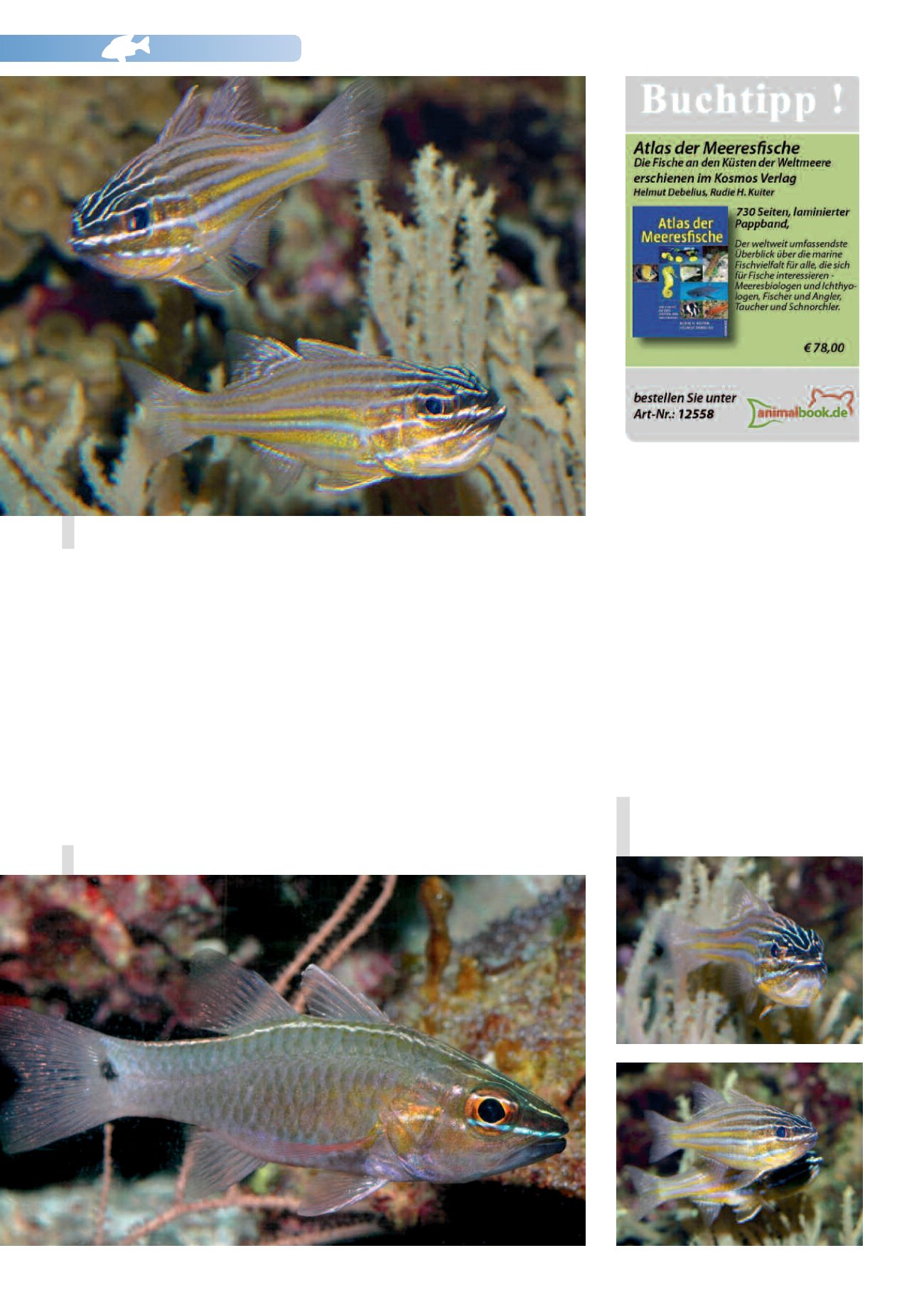
NEWS 110
16
The only 7-9 cm long
Apogon notatus
, for
example, lays egg-balls containing several
thousand eggs, while at the other extreme
Pterapogon
kauderni
,
the
Banggai
Cardinalfish, produces only some 24 fry per
spawning on average and 170 young per
year (Mai, 2004). The Banggai Cardinalfish
also has one of the smallest natural
distribution regions of any tropical marine
fish, and thus represents an exception in
practically every respect.
There are all sorts of intermediates between
these two extremes of breeding.
Ostorhinchus
Brooding pair of
Ostorhinchus cyanosoma
. Male below, female above.
Ostorhinchus cyanosoma
grows to 6-8 cm
long. Females stay with "their" males after
spawning, at least in the aquarium.
a more probable explanation is that the
male doesn't release sperm until after he
has picked up the eggs and that the
striking, excited way in which the female
swims around the male after he has picked
up the eggs serves to enrich the water he
breathes with sperm such that fertilization
of the eggs can take place in his mouth
(Kuwamura, 1983). Even though the
hypothesis of internal fertilization in the
King of the Mullets can still be found in the
latest literature and is portrayed as fact,
recent research instead indicates that the
theory is untenable (Petersen et al. 2005),
not least because male cardinalfishes lack
any anatomical structures that might make
such internal fertilization possible.
Productive fishes
Cardinalfishes are in general very common,
and are not only widely distributed but also
found at high population densities. At the
same time they have highly variable
strategies as regards numbers of offspring.
Ostorhinchus hartzfeldii
is one of the larger cardinalfish species with a maximum length of 12 cm.


